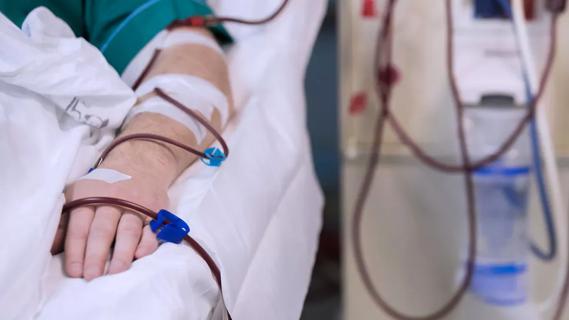Educational program helps reduce skin injuries

Several years ago, Mary Szostakowski, MSN, RN, CNOR organized a team of experts to tackle the issue of pressure injuries in operating rooms. “There was an increase in OR-acquired pressure ulcer injuries, and because that’s a nursing-specific metric, we felt like we needed to do something to make nurses more aware,” says Szostakowski, then nursing quality program manager for the OR. “We created education so nurses knew what pressure injuries were, what to look for and, more importantly, how to guard against them.”
Advertisement
Cleveland Clinic is a non-profit academic medical center. Advertising on our site helps support our mission. We do not endorse non-Cleveland Clinic products or services. Policy
To have the greatest impact, Szostakowski enlisted the help of others. “If I was going to do a program about skin, I wanted to partner with a Cleveland Clinic team that knows about skin – the Wound Care Consult Team,” says Szostakowski, who now serves as an OR nurse manager for the urology and gynecology service lines. She consulted with Molly Sammon, BSN, RN, WOCN, a project manager for wound care (now retired) for strategies to reduce the number of OR-acquired pressure injuries. Together with Kay Tighe, MSN, RN, CNOR, a perioperative educator in surgical services, they created the GAUGE project.
GAUGE – Guard Against Ulcers with Good Evaluation – was a multifaceted program. Szostakowski, Tighe and Mary Montague, DNP, ACNS, BC, CWOCN, manager of the Wound Consult Care Team began offering educational presentations at quarterly meetings of the entire OR nursing team. Among the topics covered were:
The team also educated nurses on pressure injury prevention and GAUGE project principles during monthly in-service training. The goal was for participants to understand the difference between stage 1 and stage 2 pressure ulcers, know the risk factors for OR-acquired pressure injury, be able to implement prevention interventions and be able to explain the impact of pressure ulcers on the cost of medical care.
Advertisement
Another step taken by the GAUGE team was to create a Perioperative Skin Care Task Force comprising a nursing representative from each OR service line, a nurse anesthetist, a member of the Wound Care Consult Team and a representative from Nursing Quality. During the monthly task force meetings, Szostakowski provided a skin report on any OR-acquired pressure injuries, with data broken down by service line and location of the injury. Tighe offered education on topics such as skin care assessment.
The task force had lively discussions aimed at decreasing pressure injuries. For instance, if there was an uptick in skin tears on arms, the group would talk about possible reasons why and brainstorm how to prevent such injuries. “It was all about awareness – keeping the topic of skin care injuries in front of people,” says Szostakowski.
The GAUGE team also partnered with units that receive post-op patients, such as the cardiac ICU. “Nurses on the inpatient units are on top of pressure ulcer injuries, and we wanted to mirror what some of the ICUs were doing,” recalls Szostakowski. “We could learn from each other to make things better.”
Ultimately, the efforts of the GAUGE team made a difference in patient outcomes. During the quarter before the team launched its education, Cleveland Clinic’s main campus had 1.61 OR-acquired pressure injuries per 1,000 cases. A year later, that figure had dropped to 1.11/1,000 cases.
“The GAUGE project was a lot of work and reports, but we made a difference by getting information in front of people so they realized the importance of skin care in the OR,” says Szostakowski.
Advertisement
Advertisement

Caregivers rely on cross-hospital collaboration to guide critical response

Nurses play a pivotal role in Cleveland Clinic Connected, a global affiliation program aimed at sharing expertise

Nurse connects patients with Cleveland Clinic experts across the globe

Clinicians prepare to deliver lifesaving care in the face of public health threats

Phone triage system reduces call backs and delays in care

New protocol reduces costs, increases patient and caregiver satisfaction

New options benefit caregivers, nursing units and patients

Nurses facilitate preoperative program to educate and prepare patients for ongoing care